MAPOG is a helpful tool that lets you find and download farmland data for different projects. This data can help you plan farming activities, understand land use or study environmental areas. In this guide, we will show you how to download farmland data in easy steps.
GIS data is special data that shows places on a map, and with MAPOG, you can see where farmland is located and download this information in different file formats. Farmland data can also be filtered by region, making it easier to locate and download the specific GIS data needed for your analysis. Various formats are provided to suit different needs.
Note:
- All data provided by MAPOG is in the GCS datum EPSG:4326 WGS84 CRS (Coordinate Reference System).
- To download data in shapefile format, you will need to log in to the platform.
Farmland data is useful for farmers, researchers, and governments. It helps people plan farms, understand land use and study agriculture. MAPOG’s GIS Data feature lets you download farmland information in a wide range of file types such as KML, SHP, CSV, GeoJSON, Tab, SQL, Tiff, GML, KMZ, GPKZ, SQLITE, DXF, MIF, TOPOJSON, XLSX, GPX, ODS, MID, and GPS.
Step-by-Step Guide to Download Farmland Data
Step 1: Choose the Country
here, you have to select the country.
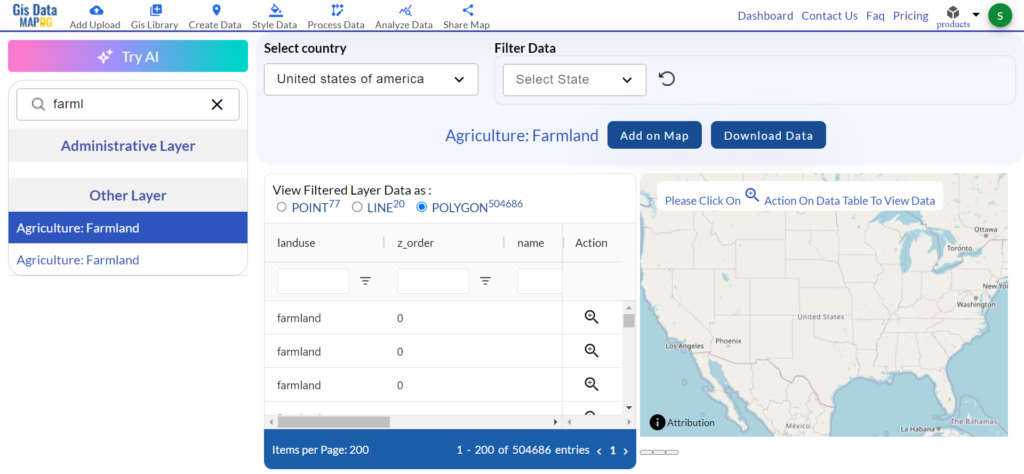
If you can’t find the data or country, use the ‘Try AI’ feature in MAPOG to quickly locate the information you need.
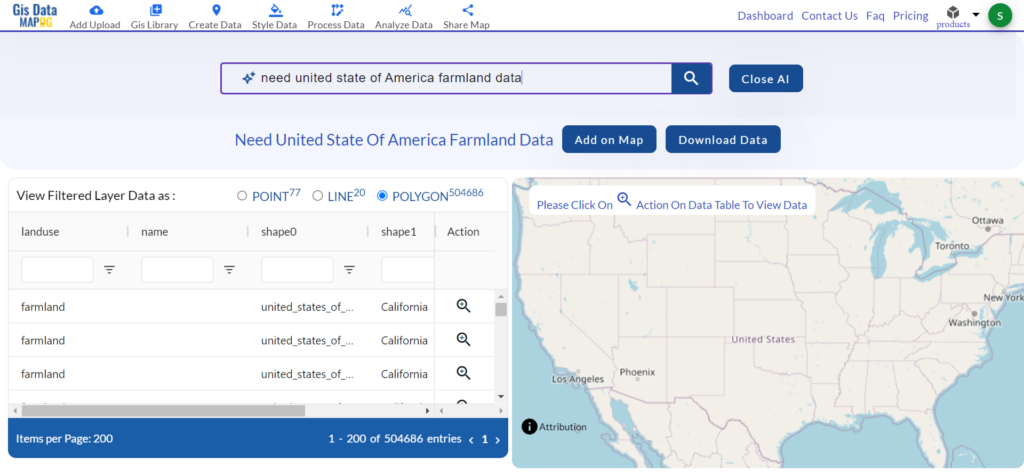
Step 2: Filter the Data
Use filters to narrow down your search and then you can filter by specific regions or crop types. This helps you find exactly what you’re looking for.
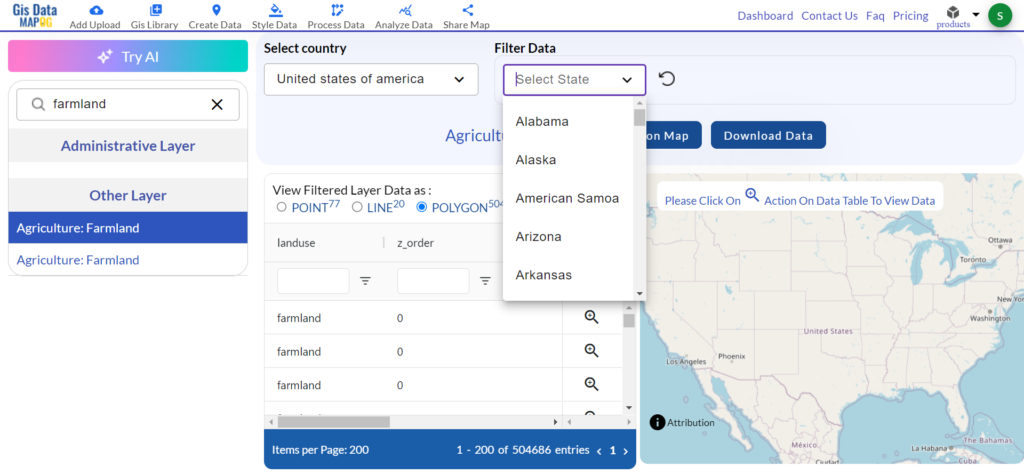
Step 3: Add to Map
After selecting the farmland data then please add it to your map. This helps you see where the farmland is located.
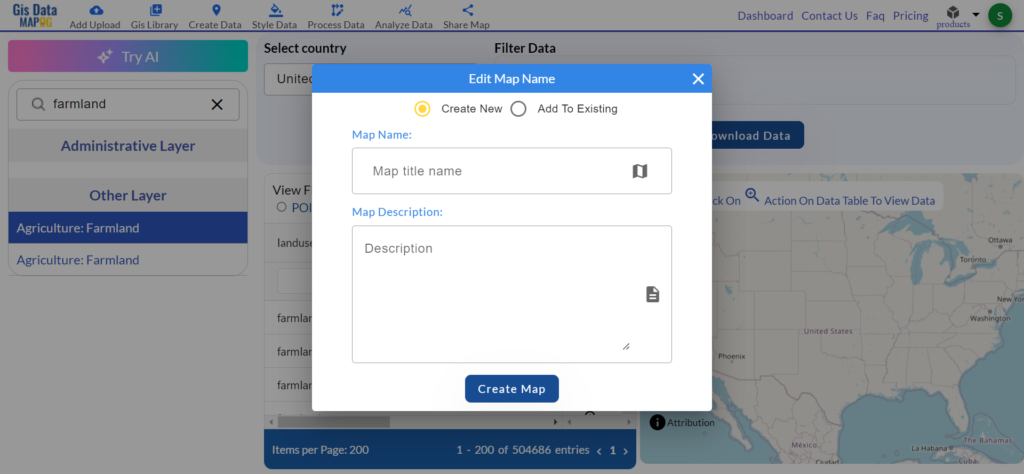
Step 4: Download the Data
You’ve checked the map and please click the download button. You can choose different formats, CSV, SHP, GeoJSON and many more depending on what you need for your project.
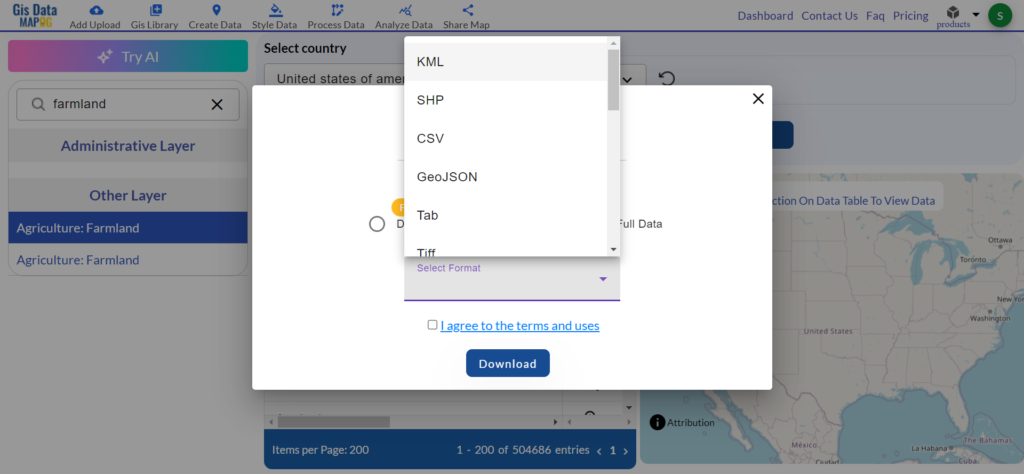
More About Farmland Data
Farmland data can come in various forms. Point data shows specific locations, such as the exact spots where individual farms are located. Polygon data displays the shape and boundaries of larger farmland areas, offering a broader view of the land’s extent. People often use these different data types to gain detailed insights into agricultural land use.
Discover the MAPOG’s Map Analysis tool, allowing you to effortlessly, Upload vector and raster files, Add WMS (Web Map Service) layers, Import Excel or CSV data, Merge and split polygons, Create new polygon and polyline data, Convert between various formats, Perform buffer analysis, Generate grids, Transform points to polygons, Calculate isochrones and support the geocoder for accurate location data.
For more information or assistance with downloading Farmland data, please contact us at support@mapog.com.
Disclaimer:
The GIS data provided for download in this article was initially sourced from OpenStreetMap (OSM) and further modified to enhance its usability. Please note that the original data is licensed under the Open Database License (ODbL) by the OpenStreetMap contributors. While modifications have been made to improve the data, any use, redistribution, or modification of this data must comply with the ODbL license terms. For more information on the ODbL, please visit OpenStreetMap’s License Page.